Doing an “activity” in a class of sixty is quite challenging for us as teachers. Activities come with their own set of issues like classroom management, space constraints, resource crunch and most importantly, time management. Despite these roadblocks, we, the class teachers of std. V decided to conduct the first formative assessments using an activity based approach as opposed to the usual worksheet based way of testing. This was a deliberate decision as school-wide we’ve decided we would try two new things this year
i) use alternative assessment tools
ii) use collaborative learning strategies for teaching and learning
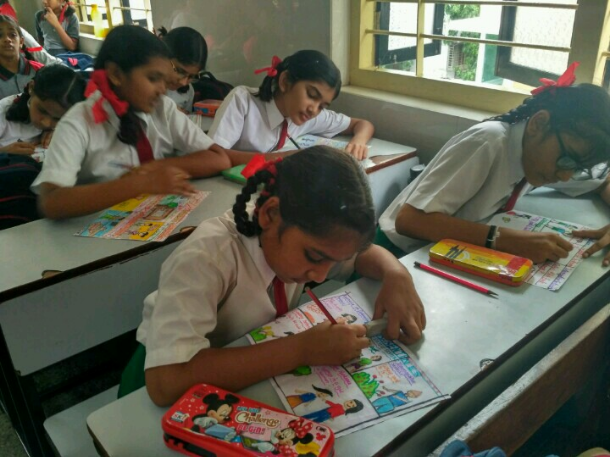
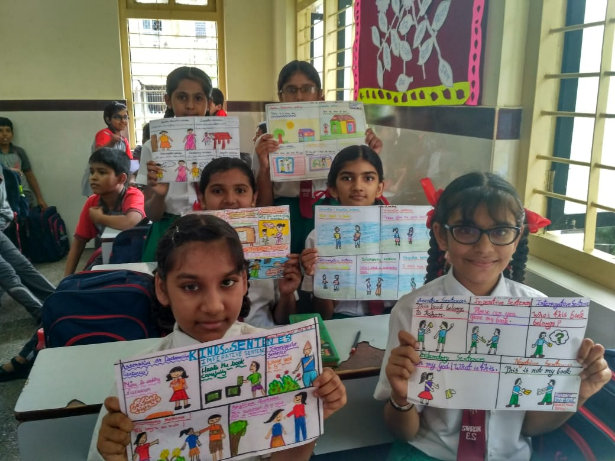
The previous week we had taught and practiced the concept of Types of Sentences with the students. We wanted to assess student learning on this topic without making this stressful or boring for them. Typically, worksheets limit students to identify the type of sentences given by the teacher. Over the last few weeks we’d realised that our students had not only understood the concept well but were also very capable of creating their own assertive, imperative, exclamatory, negative and interrogative sentences. This according to the Bloom’s taxonomy is a higher order skill as they are challenged to express themselves independently at this level of ‘creation’.
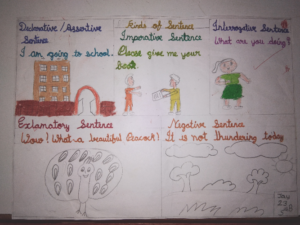
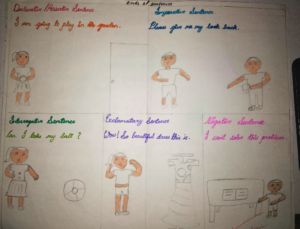
So, a day before the planned assessment, we informed students to bring an A4 size paper and colours to class the next day. We did not inform students about the topic they would be evaluated on. In fact we did not even tell them about the upcoming assessment. All they knew was that there would be an activity in the English period the next day.
We were quite confident that they would perform well. Students were instructed that they could take any one object, e.g. a story book and they had to create five different types of sentences using the same object. This had to be supported by a drawing to depict the meaning of the sentence as well. As students started attempting the task we slowly realized that limiting all students to a particular object for all five sentences was turning out to be tricky for some learners. So, within the first ten minutes, we modified our instructions and told them they were free to use different objects for each type of sentence.
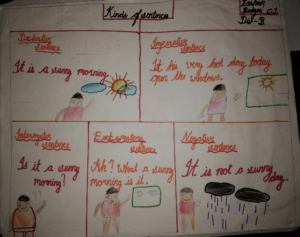
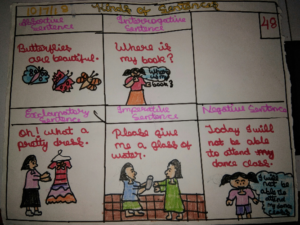
Their facial expressions showed they had their thinking caps on and were quite engaged in completing the task. As teachers, we were excited to see them think independently, express themselves creatively and draw originally. The student work samples here show how each student did his/her task independently as there were no two responses that were alike!

As teachers, we not only had fun watching them work but we were also eagerly looking forward to reading each of their responses as each one was so special!
Anita Mathew & Anita Singh
Class Teachers, Std. V


This is amazing work!
What a wonderful way to make assessments fun!
The students will remember the sentence types as well, since memory is best activated by emotion. And fun is such a positive emotion. No longer would they dread the ominous Grammar task 🙂
Learning as reader!